The 30 Best Places to Live in Florida: Top Communities

Florida consistently ranks as one of America’s most desirable states for relocation, attracting newcomers with its year-round sunshine, diverse communities, and growing job markets.
The state offers an impressive range of living options, from vibrant metropolitan areas and historic coastal towns to family-friendly suburbs and luxury beach communities.
This comprehensive guide examines 30 of Florida’s top-rated cities and towns, evaluating each location based on factors such as cost of living, employment opportunities, education quality, and overall livability.
Whether prospective residents seek urban amenities, coastal living, or suburban comfort, Florida’s diverse geography and economy provide options to match various lifestyles and budgets.
Here are the 30 best places to live in Florida:
30. Winter Garden
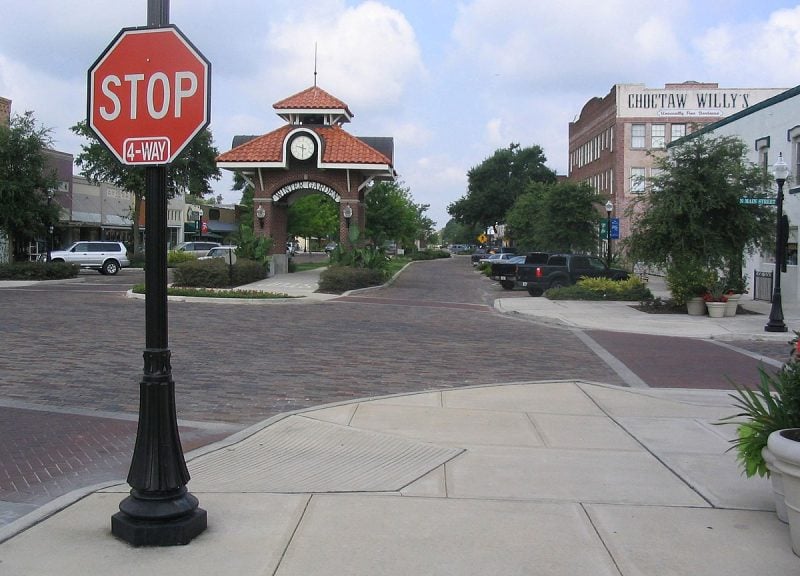
Winter Garden is a charming suburb of Orlando located in Orange County. The city has a population of approximately 47,000 residents.
This community offers a sparse suburban feel where most residents own their homes. Families and young professionals make up the majority of the population.
Winter Garden earned recognition as one of Money magazine’s Best Places to Live in 2019. The city averages 236 sunny days annually despite its winter-themed name.
The historic downtown area provides walkable streets with shops, restaurants, and cultural venues. Residents enjoy access to the popular West Orange Trail for recreational activities.
Home prices in Winter Garden exceed Florida’s state average of $278,762. The city’s economy benefits from strong tourism, retail, and healthcare industries.
Winter Garden combines historic charm with modern amenities, creating an attractive living environment west of Orlando.
29. Palm Harbor

Palm Harbor stands as one of Tampa’s most desirable suburbs, consistently ranking among Florida’s top places to live. This unincorporated community has experienced significant growth over the past three decades.
The area offers a secure suburban environment that appeals to families seeking stability. Residents enjoy a strong sense of community among welcoming neighbors in this peaceful residential setting.
Housing costs have risen considerably following Florida’s real estate boom. Median home prices have increased markedly, reflecting the area’s growing popularity and demand.
The community provides something for various lifestyle preferences. Its proximity to Tampa offers urban amenities while maintaining a suburban character.
Traffic congestion and air quality issues have emerged as typical growth-related challenges. These concerns accompany the area’s continued development and population increase.
Palm Harbor’s market appeal demonstrates why people choose to relocate here, making it a notable consideration for those exploring Florida living options.
28. Panama City Beach
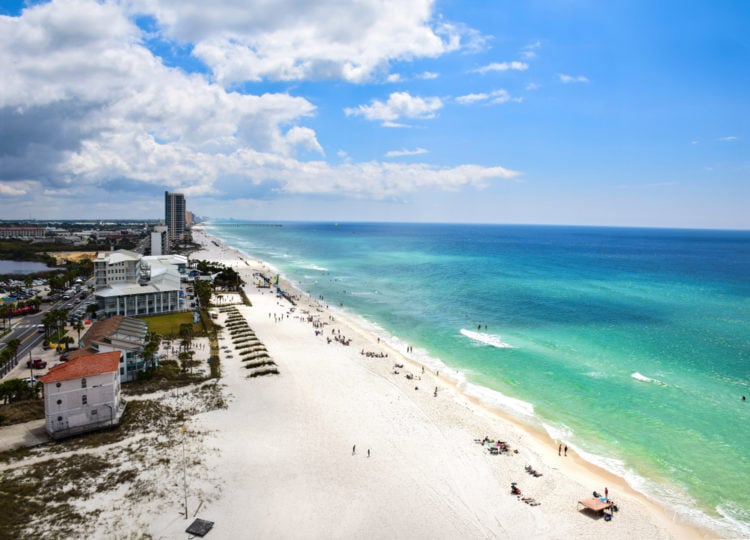
Panama City Beach offers residents beautiful coastal living along Florida’s Gulf Coast. The city features pristine white sand beaches and emerald waters that attract visitors year-round.
Home prices in Panama City Beach align closely with Florida’s state average of $278,762. Several well-established neighborhoods provide options for different budgets and lifestyles.
The area experiences significant seasonal population increases during tourist periods. Summer months bring extremely hot temperatures and crowded conditions that residents must navigate.
Panama City Beach provides various recreational activities and dining options. The local economy benefits from tourism, creating service industry jobs for residents.
Safety levels and public amenities vary by neighborhood within the city. Prospective residents should research specific areas to find locations that match their preferences and needs.
The community attracts people seeking beachfront living in a relatively affordable Gulf Coast location.
27. Plantation
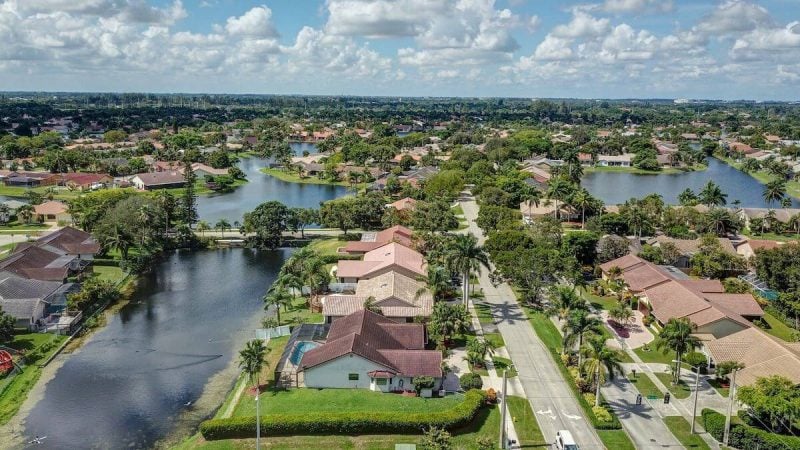
Plantation is a suburban city in Broward County with a population of 94,366 residents. The city offers warm year-round weather and proximity to South Florida’s beaches.
The typical household earns $75,780 annually, which exceeds the national median of $67,500. The poverty rate stands at 8.5%, significantly lower than the national average.
Plantation features diverse residential neighborhoods. Plantation Acres provides large lots with a rural atmosphere within city limits. Central Park offers mixed-use development with condos, shops, and restaurants.
Jacaranda Lakes is a gated community featuring lakes and well-maintained homes. Plantation Isles provides waterfront properties with canal access. Hawk’s Landing serves as an upscale gated community option.
The city combines suburban living with reasonable cost of living compared to other South Florida areas. Residents benefit from the area’s established infrastructure and amenities while maintaining access to regional employment opportunities.
26. Pembroke Pines

Pembroke Pines stands out as one of Florida’s premier suburban communities in Broward County. This city of 170,557 residents offers an urban-suburban lifestyle that attracts families and professionals alike.
The community features over 40 parks, including the expansive 299-acre C.B. Smith Park. Residents enjoy abundant green spaces and recreational facilities throughout the city.
Safety remains a top priority in Pembroke Pines, with low crime rates contributing to its family-friendly reputation. Well-planned neighborhoods provide secure environments for raising children.
The school system ranks among Broward County’s best, making it attractive to families prioritizing education. Chapel Trail represents one of the most desirable neighborhoods, offering single-family homes and townhouses.
Home prices exceed Florida’s state average of $278,762, reflecting the area’s desirability and quality amenities. The diverse community maintains a welcoming atmosphere for both longtime residents and newcomers.
25. Palm Bay
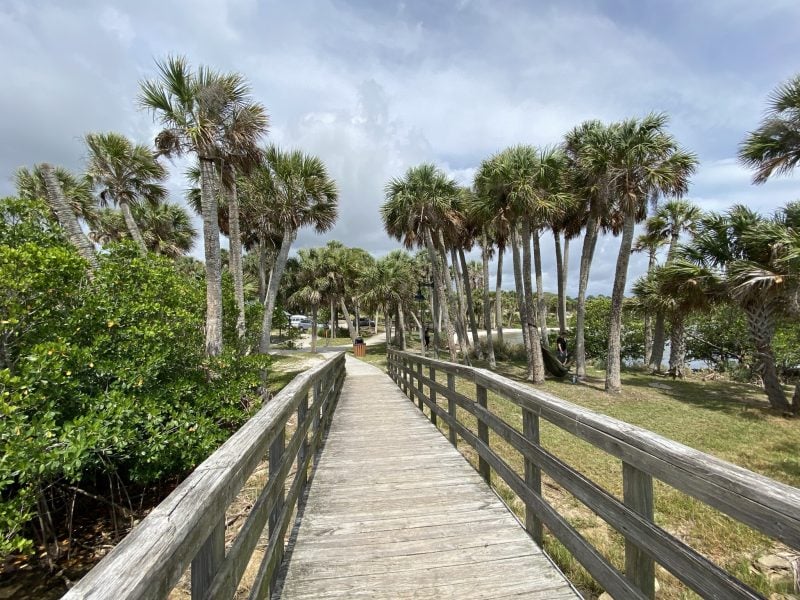
Palm Bay sits on Florida’s Space Coast with a population of 125,273 residents. The city offers a sparse suburban atmosphere where most people own their homes.
Residents enjoy numerous outdoor activities including fishing, boating, and surfing. The city provides easy access to Melbourne beaches for those seeking coastal recreation.
Palm Bay features extensive parkland, including the notable Turkey Creek Sanctuary. These green spaces contribute to the area’s appeal for nature enthusiasts.
The city offers advantages like a low cost of living and great weather year-round. Palm Bay’s proximity to airports makes travel convenient for residents.
Housing quality varies significantly throughout different neighborhoods in Palm Bay. The best areas are typically determined by median home values and market demand.
24. Melbourne
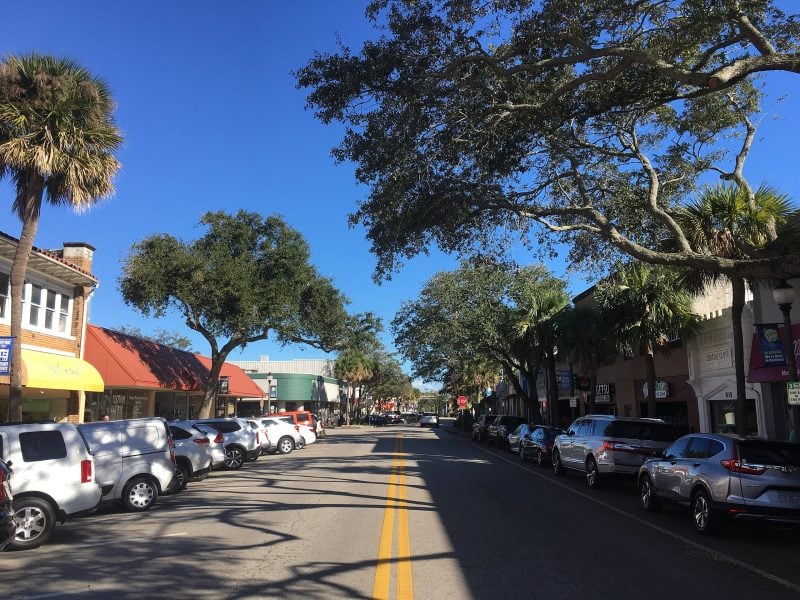
Melbourne sits along Florida’s Space Coast in Brevard County with a population of 85,718 residents. The city offers easy access to beaches and attractions like the Brevard Zoo.
Located southeast of Orlando, Melbourne borders the Indian River on its eastern side. This positioning provides residents with both coastal amenities and proximity to major metropolitan areas.
The city features a vibrant arts district and family-friendly beaches. Melbourne’s economy centers around aerospace and manufacturing industries, reflecting its Space Coast location.
Housing quality varies significantly throughout different neighborhoods in Melbourne. The best areas are typically determined by median home values and market demand.
Residents enjoy a dense suburban environment with numerous restaurants and parks. Most Melbourne residents own their homes rather than rent.
The area serves as a popular retirement destination while maintaining appeal for families and working professionals.
23. Daytona Beach
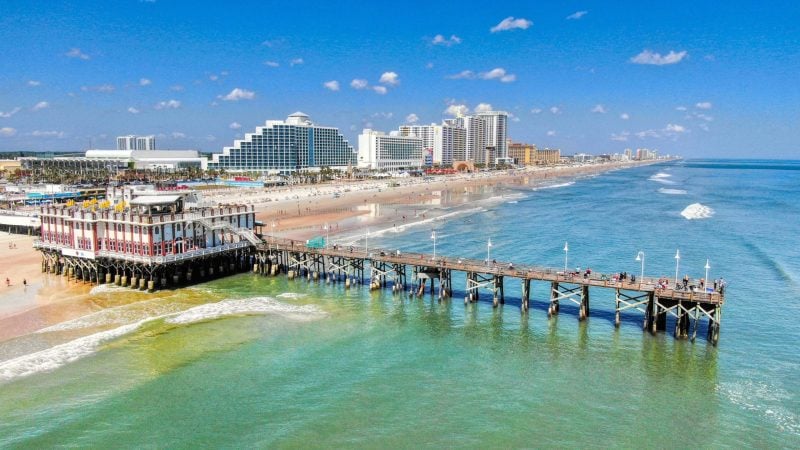
Daytona Beach offers residents a blend of coastal living and motorsports culture. The city sits along Florida’s Atlantic coast and features 23 miles of beaches.
The area attracts people seeking beachfront lifestyle opportunities. Residents enjoy year-round warm weather and ocean access for recreational activities like fishing and swimming.
Housing costs remain relatively affordable compared to other Florida coastal cities. The local economy benefits from tourism, motorsports, and aviation industries.
Daytona Beach provides cultural attractions beyond racing events. The city features museums, parks, and entertainment venues for residents of all ages.
Public transportation options include bus services connecting neighborhoods. Major highways provide access to other Florida metropolitan areas within driving distance.
The Greater Daytona region includes surrounding communities that offer additional housing choices. Residents can find various neighborhoods matching different lifestyle preferences and budgets.
22. Boynton Beach
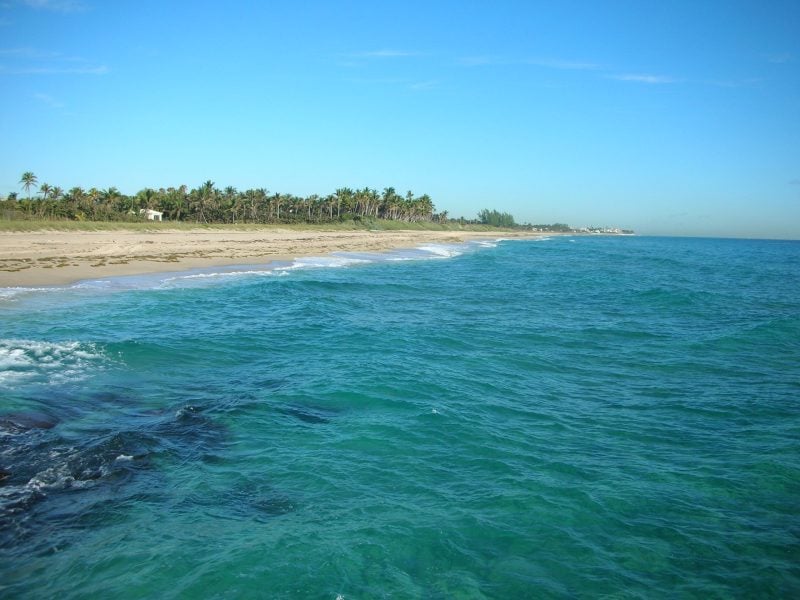
Boynton Beach offers residents a coastal lifestyle in Palm Beach County with access to beautiful beaches and recreational activities. The city maintains an overall livability score of 73 out of 100 according to various ranking systems.
The community features diverse neighborhoods ranging from gated communities to affordable single-family homes. Crime rates remain relatively low compared to other Florida cities.
Residents enjoy sunny weather year-round and numerous cultural amenities. The city provides easy beach access with wheelchair-accessible boardwalks and recreational facilities.
Boynton Beach ranks as the 66th best place to live in Florida. The area attracts people seeking a relaxed atmosphere with proximity to Palm Beach County attractions and employment opportunities.
Housing values vary significantly across different neighborhoods within the city.
21. Coral Gables
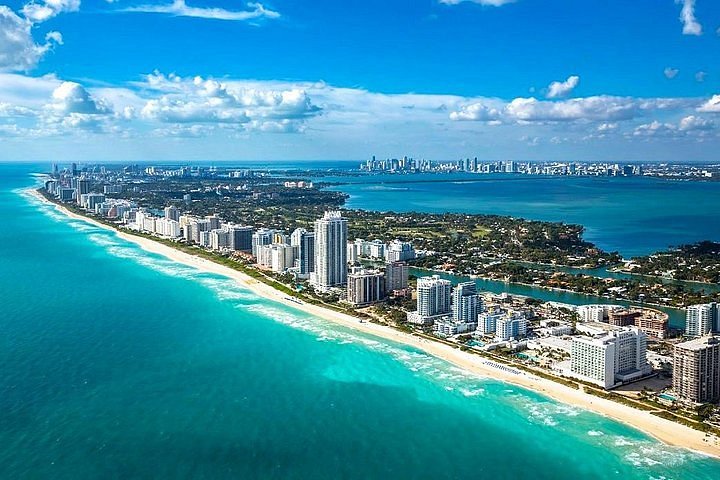
Coral Gables stands as one of Miami’s most prestigious neighborhoods. The city features Mediterranean Revival architecture and tree-lined streets that create an elegant atmosphere.
Housing costs run higher than Florida’s average. Home prices significantly exceed the state average of $278,762. Rental options include older buildings with more affordable units and newer condos starting around $1,800 for one-bedroom apartments.
The city scores well on livability metrics. It receives high ratings for weather conditions and maintains good safety standards. Schools in the area perform well, attracting families to the community.
Coral Gables offers a central location near Miami’s business districts. Young professionals find the area appealing due to dining options and nightlife. The neighborhood provides easy access to work opportunities throughout the greater Miami area.
20. Lakeland
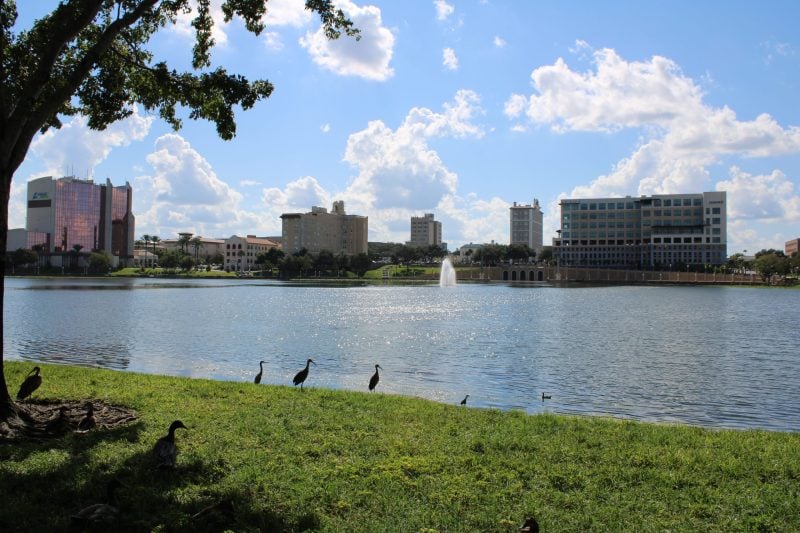
Lakeland sits strategically between Tampa and Orlando, making it an attractive location for residents who want access to major metropolitan areas. The city has a population of over 110,000 and ranks as Florida’s 22nd largest city.
US News & World Report ranked Lakeland 80th out of 150 major cities on its 2025-2026 Best Places to Live list. The ranking considers factors like quality of life and value.
The city offers affordable housing options compared to many Florida markets. Lakeland’s expanding employment market provides job opportunities across various sectors.
Residents can choose from nearly 100 geographic neighborhoods with 30 active associations. Popular areas include the Historic District with walkable streets and beautiful architecture, plus Grasslands, an upscale golf course community.
Lake Hollingsworth provides lakefront living and recreational trails. The Dixieland neighborhood attracts residents seeking an up-and-coming area with character.
19. Bonita Springs
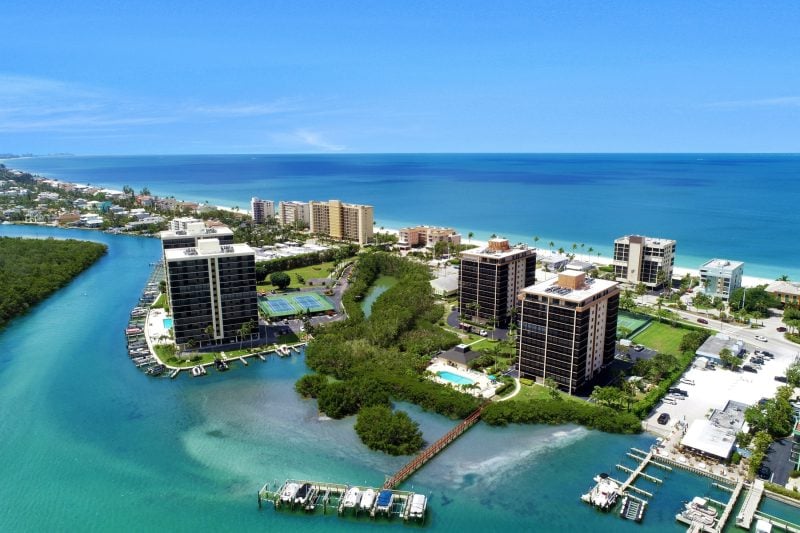
Bonita Springs sits in Lee County along Florida’s Gulf Coast. The city offers residents a laid-back lifestyle with access to pristine beaches and outdoor recreation.
The community maintains low crime rates and high quality of life standards. BestPlaces ranks Bonita Springs among America’s top cities for livability.
Several desirable neighborhoods define the area. Bonita Bay features upscale gated living with golf courses and nature preserves. Pelican Landing provides beach access and luxury amenities.
Spanish Wells combines golf community living with diverse housing options. Downtown Bonita Springs delivers urban convenience with historic character.
Housing costs exceed Florida’s average of $278,762. The premium reflects strong market demand and desirable coastal location.
Residents enjoy year-round access to beaches, golf courses, and parks. The city attracts retirees and families seeking comfortable subtropical living without major city pressures.
18. Port St. Lucie

Port St. Lucie ranks as Florida’s sixth-largest city with approximately 240,000 residents. The city sits on Florida’s Treasure Coast and has experienced rapid population growth in recent years.
Families choose Port St. Lucie for its clean beaches and year-round pleasant weather. The city offers excellent quality of life with numerous parks, walking trails, and abundant golf courses.
Tradition stands out as a top neighborhood choice. This master-planned community features a town center, parks, and diverse housing options with a small-town atmosphere.
St. Lucie West attracts residents with its proximity to the New York Mets spring training facility. The area combines suburban convenience with recreational amenities.
The city’s booming real estate market reflects its growing popularity among newcomers. Port St. Lucie provides residents with shopping districts, restaurants, and cultural attractions in the downtown area.
17. Vero Beach
Vero Beach sits on Florida’s Treasure Coast with a population of 16,785 residents. The city combines affordable living with coastal charm and walkable neighborhoods.
The cost of living index stands at 95, making it reasonably priced compared to other Florida coastal areas. Most residents own their homes in this dense suburban community.
Central Beach and South Beach offer direct ocean access for beach enthusiasts. These areas provide quintessential Florida seaside living with easy walkability to the shore.
The city features over 27 top-ranked schools, making it attractive for families. Many retirees also choose Vero Beach as their home base.
Indian River Shores and John’s Island appeal to those seeking gated community living. The area maintains a laid-back atmosphere while offering modern amenities.
Vero Beach provides safety and value for homebuyers in 2025. The community emphasizes family-friendly environments with pristine beaches nearby.
16. Winter Park
Winter Park stands as one of Central Florida’s most desirable communities. This charming suburb sits just north of Orlando with a population of 29,929 residents.
The city blends urban and suburban elements seamlessly. Most residents own their homes in this upscale community that originated as a late 19th-century resort destination.
Winter Park receives high ratings across multiple quality of life categories. The area scores particularly well for education and overall livability among Florida cities.
Residents enjoy abundant cultural institutions and scenic beauty throughout the city. The community offers numerous bars, restaurants, coffee shops, and parks for entertainment and recreation.
Home prices exceed Florida’s state average of $278,762. The higher housing costs reflect the area’s desirability and prime location near Orlando.
The city provides excellent school systems and maintains low crime rates. Winter Park attracts residents seeking small-town charm with metropolitan area access.
15. Boca Raton
Boca Raton ranks as the top place to live in Palm Beach County. This coastal city offers residents year-round warm weather and pristine beaches.
The community provides world-class amenities including golf courses, upscale shopping, and fine dining options. Residents enjoy a strong sense of community in this affluent area.
Home prices in Boca Raton exceed Florida’s average of $278,762. The higher costs reflect the city’s desirability and premium location.
West Boca offers some of the best residential areas. Eastern neighborhoods provide waterfront living options for those seeking coastal proximity.
The city features diverse housing options from affordable neighborhoods to luxury gated communities. Master-planned developments offer extensive amenities and recreational facilities.
Boca Raton provides excellent access to parks, restaurants, and entertainment venues. Families benefit from numerous activities and social opportunities throughout the area.
14. Delray Beach
Delray Beach sits in Palm Beach County as part of the Miami Metropolitan Area. The city earned the official nickname “Village by the Sea” for its prime coastal location.
The area attracts residents with its beautiful beaches and excellent surfing conditions. Year-round mild temperatures and abundant sunny days make it ideal for outdoor activities.
Delray Beach combines small-town charm with urban conveniences. The vibrant downtown area offers dining, shopping, and entertainment options within walking distance of residential neighborhoods.
The city provides strong educational opportunities through public, private, and charter school options. Families find the area particularly appealing for children of all ages.
Housing options range from historic homes to modern gated communities. Many neighborhoods cater specifically to residents 55 and older with resort-style amenities.
The beachside lifestyle remains the primary draw for new residents. Ocean access and coastal living define much of the community’s appeal and daily life.
13. Palm Coast
Palm Coast stands out as one of Florida’s most attractive coastal communities. The city offers beautiful waterfront properties and well-maintained golf communities throughout its neighborhoods.
Families find Palm Coast particularly appealing due to its excellent schools and safe residential areas. The community maintains a welcoming atmosphere that attracts both young professionals and retirees.
Indian Trails ranks among the most popular neighborhoods. Its proximity to Interstate 95 provides convenient access to restaurants and entertainment venues.
The city features wide, white sandy beaches along its coastline. Residents enjoy easy access to outdoor activities and water recreation year-round.
Housing costs have increased but remain more affordable than many other East Coast Florida destinations. The area offers diverse housing options from suburban homes to luxury gated communities.
Palm Coast combines coastal living benefits with small-town community feel, making it an ideal choice for various lifestyles.
12. Cape Coral
Cape Coral sits in southwest Florida along the Gulf of Mexico with over 206,000 residents. The city features hundreds of miles of canals that create extensive waterfront living opportunities.
Many retirees choose Cape Coral for its relaxed atmosphere and safety ratings. The city maintains numerous parks and recreational facilities throughout its neighborhoods.
Housing options range from affordable family homes to luxury waterfront properties. Most residents own their homes in this sparse suburban environment.
The Caloosahatchee River area offers scenic views and diverse housing choices. Cape Harbour provides upscale living with marina access and waterfront amenities.
Sandoval represents newer development with gated community features. The city’s public schools perform above average compared to state standards.
Cape Coral attracts families and retirees seeking outdoor activities and water-based recreation. The political climate tends conservative among residents.
11. Gainesville
Gainesville is home to the University of Florida and ranks among the top places to live in the state. The city has a population of 143,611 residents in Alachua County.
The University of Florida ranks in the top 30 universities nationally. This gives Gainesville a vibrant college town atmosphere with numerous bars, restaurants, and cultural activities.
Popular neighborhoods include Haile Plantation, a master-planned community with varied housing options. Duckpond offers historic charm near downtown with beautiful older homes.
Suburban Heights attracts families with good schools and parks. Tioga features newer upscale homes and a town center for shopping and dining.
Most residents rent their homes, creating an urban-suburban mix environment. The city offers outdoor activities at nearby Paynes Prairie State Park for canoeing and kayaking.
Gainesville provides year-round warm weather and continues growing beyond its college town identity.
10. Clearwater
Clearwater stands out as one of Florida’s premier coastal destinations with a population of 117,075. The city offers residents an urban-suburban blend with most homeowners enjoying stable property ownership.
The area features famous white sandy beaches and crystal-clear waters that attract both residents and visitors. Clearwater Beach provides direct oceanfront living for those seeking a seaside lifestyle.
Island Estates offers an exclusive community with waterfront properties. The Countryside neighborhood caters to families with quality schools and parks nearby.
Downtown Clearwater appeals to urban dwellers who prefer cultural amenities and convenience. The city maintains numerous bars, restaurants, coffee shops, and recreational parks throughout its neighborhoods.
Clearwater provides diverse housing options from beachfront condos to suburban family homes. The location offers easy access to employment opportunities while maintaining Florida’s relaxed coastal atmosphere.
9. West Palm Beach
West Palm Beach offers residents access to beautiful Atlantic Coast beaches and a vibrant cultural scene. The city features 13 historic districts, each providing unique lifestyle options for different preferences.
Downtown West Palm Beach combines urban amenities with coastal charm. Residents enjoy world-class venues, art galleries, and diverse dining options throughout the area.
The housing market reflects Florida’s average prices, with homes typically selling around $278,762. Various neighborhoods cater to different budgets and lifestyle needs.
Outdoor enthusiasts can explore Grassy Waters Preserve or enjoy waterfront activities along the coast. The city maintains numerous parks and recreational facilities for active residents.
West Palm Beach provides strong job opportunities in healthcare, finance, and tourism sectors. The location offers convenient access to Miami and other South Florida metropolitan areas.
8. Fort Lauderdale
Fort Lauderdale stands out as one of Florida’s premier coastal cities with a population of 183,032. The city offers residents an urban lifestyle with extensive waterfront access and numerous recreational opportunities.
The housing market caters to diverse preferences and budgets. Options range from luxury condos downtown to spacious suburban family homes and townhouses throughout various neighborhoods.
Notable areas include Las Olas Isles for luxury waterfront living and Sailboat Bend for families and professionals. Victoria Park and Rio Vista provide distinct lifestyle options from bustling city vibes to peaceful residential settings.
Fort Lauderdale serves as an educational and business hub with 35 colleges and universities. The city hosts 200 corporate, regional, and international headquarters, creating strong employment opportunities.
Residents enjoy abundant dining, shopping, and entertainment options. The city features numerous bars, restaurants, coffee shops, and parks that contribute to its vibrant community atmosphere.
7. St. Augustine
St. Augustine stands as America’s oldest city, offering residents a unique blend of Spanish colonial architecture and coastal living. The city maintains a population of approximately 15,000 people in St. Johns County.
Home prices exceed Florida’s state average of $278,762, reflecting the area’s desirability. Most residents own their homes in this dense suburban community.
The city provides abundant restaurants, coffee shops, and parks for daily entertainment. Atlantic beaches offer recreational opportunities with refreshing ocean breezes.
St. Augustine serves as a suburb of Jacksonville, providing access to larger city amenities while maintaining small-town character. The historic downtown area features centuries-old architecture and established neighborhoods.
Tourism remains a significant aspect of local life year-round. The combination of historical significance, coastal location, and well-developed infrastructure makes St. Augustine attractive to new residents seeking Florida living with cultural depth.
6. Sarasota
Sarasota ranks as the fifth best place to live in the United States according to U.S. News & World Report. The city holds the top position for best place to live in Florida.
Located on Florida’s Gulf Coast, Sarasota combines coastal living with urban amenities. The city sits about an hour south of Tampa Bay.
Sarasota features over 30 golf courses near downtown, reflecting its affluent resort community status. The area offers stunning beaches that attract visitors year-round.
The city serves as a cultural and business center with an innovative arts community. Residents enjoy a vibrant downtown core alongside peaceful suburban areas.
Sarasota provides diverse neighborhoods from beachfront areas like Siesta Key to family-oriented communities such as Palmer Ranch. The region offers excellent schools and recreational amenities for residents.
5. Jacksonville
Jacksonville stands as Florida’s largest city by area and population. The city offers year-round sunshine and warm weather that attracts residents seeking an escape from harsh winters.
The cost of living remains relatively affordable compared to other major Florida cities like Miami or Tampa. This affordability allows residents to enjoy Florida’s benefits without the premium prices found elsewhere.
Jacksonville features diverse neighborhoods ranging from historic districts to modern beachfront communities. The city provides access to multiple beaches including Jacksonville Beach and Neptune Beach.
Outdoor enthusiasts can explore nearby parks such as Hanna Park and Little Talbot Island. The northeastern Florida location offers both urban amenities and natural attractions.
The job market benefits from the city’s size and economic diversity. Jacksonville serves as a major transportation and logistics hub for the Southeast region.
4. Orlando
Orlando offers residents a blend of urban amenities and suburban comfort. The city maintains a diverse economy beyond its famous theme parks, with strong technology and healthcare sectors providing stable employment opportunities.
Downtown Orlando features modern condominiums and walkable neighborhoods. The South Eola and Thornton Park areas attract young professionals with upscale living options near Lake Eola.
Northern suburbs like Winter Park and Maitland appeal to families and retirees. These communities provide quieter residential settings while maintaining easy access to city amenities.
The region supports a mix of demographics, from working professionals to families. Orlando’s employment base includes high-tech companies and military contractors alongside the tourism industry.
Housing options range from downtown high-rises to suburban family homes. The area’s public schools and local amenities contribute to its appeal for long-term residents seeking Florida living with urban conveniences.
3. Tampa
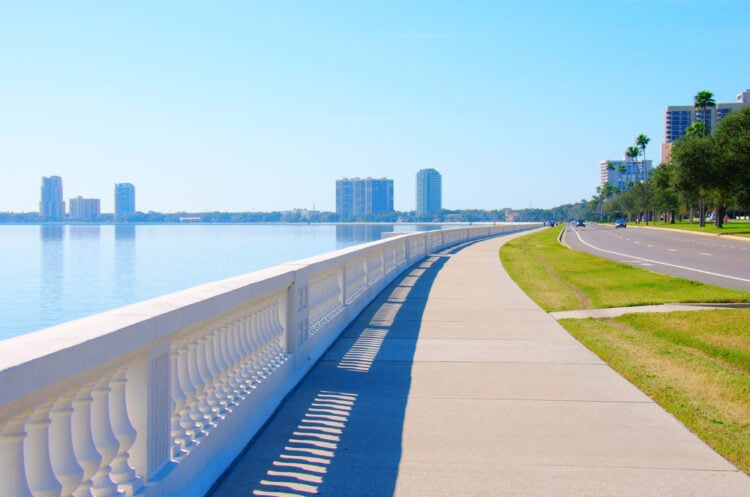
Tampa ranks among Florida’s premier cities for residents seeking urban amenities with coastal charm. The city offers diverse neighborhoods that cater to various lifestyles and budgets.
Downtown Tampa provides vibrant city living with proximity to business districts and entertainment venues. Young professionals often gravitate toward these areas for their walkability and nightlife options.
Tampa Palms stands out for families wanting suburban tranquility near urban conveniences. This neighborhood features abundant green space and affordable housing, with median home prices around $425,000 as of recent data.
The job market remains robust across multiple industries, from finance to healthcare. Major employers provide stable employment opportunities for residents.
Tampa’s neighborhoods vary significantly in character and price points. Waterfront communities offer luxury living, while inland areas provide more budget-friendly options without sacrificing quality of life.
2. Miami

Miami stands as one of Florida’s most dynamic urban centers, offering residents a unique blend of international culture and coastal living. The city’s diverse neighborhoods provide options for various lifestyles and budgets.
Brickell attracts professionals with its walkable streets and modern high-rises. This area offers easy access to restaurants, nightlife, and waterfront parks within the financial district.
Coral Gables appeals to families seeking upscale residential areas with Mediterranean-style architecture. The neighborhood features excellent schools and tree-lined streets.
Downtown Miami provides urban excitement with cultural venues, museums, and live music. Residents enjoy proximity to major employers and public transportation options.
The city’s year-round warm climate supports outdoor activities and beach access. Miami serves as a gateway to Latin America, creating diverse business opportunities and cultural experiences for residents.
1. Naples

Naples consistently ranks as one of Florida’s most desirable cities. U.S. News & World Report named it the best place to live in America.
The city attracts residents with its pristine Gulf Coast beaches and upscale amenities. Year-round warm weather makes outdoor activities accessible throughout all seasons.
Naples offers diverse neighborhoods to suit different lifestyles. Olde Naples provides historic charm and walkability. Pelican Bay features luxury high-rises and golf courses.
The job market continues growing across multiple sectors. Healthcare, hospitality, and professional services provide stable employment opportunities.
Housing options range from waterfront estates to family-friendly communities. The real estate market remains competitive due to high demand.
Cultural attractions include world-class museums and performing arts venues. The dining scene features both casual beachfront spots and fine dining establishments.
Key Factors Influencing Quality of Life in Florida
Florida’s appeal stems from several core elements that directly impact daily living. Housing affordability, year-round sunshine, educational opportunities, and medical care accessibility shape residents’ experiences across the state’s diverse communities.
Cost of Living and Housing
Florida maintains a competitive cost structure compared to other high-growth states. The absence of state income tax provides immediate financial relief for residents at all income levels.
Housing costs vary significantly by region. Miami-Dade and Broward counties command premium prices, while Central Florida markets offer more affordable options.
Property taxes remain relatively low statewide. Most counties assess rates between 0.8% and 1.2% of assessed value.
Utility costs average 5-10% below national benchmarks. Energy expenses decrease in coastal areas due to ocean breezes reducing air conditioning demands.
Grocery and retail prices align closely with national averages. Gas prices typically run $0.10-$0.20 below neighboring southeastern states.
Climate and Weather
Florida’s subtropical and tropical climates deliver consistent warmth year-round. Average temperatures range from 65°F in winter to 85°F in summer across most regions.
Hurricane season spans June through November. Coastal residents face higher insurance costs and evacuation preparations during peak months.
Humidity levels remain elevated throughout the year. Summer months bring afternoon thunderstorms that provide temporary relief from heat.
Northern Florida experiences cooler winters with occasional frost. South Florida maintains tropical conditions with minimal temperature variation.
Rainfall concentrates in summer months. Most areas receive 50-60 inches annually, supporting lush landscapes without extensive irrigation.
Education and School Systems
Florida ranks in the middle tier nationally for public education quality. Several districts achieve high performance ratings, particularly in affluent suburban areas.
Top-performing school districts include:
Sarasota County
St. Johns County
Collier County
The state operates extensive school choice programs. Charter schools and magnet programs provide alternatives to traditional public schools.
Higher education options span from community colleges to major research universities. University of Florida, Florida State University, and University of Miami attract students nationwide.
Private school enrollment exceeds national averages. Many families choose religious or preparatory institutions for enhanced academic programs.
Healthcare Access
Florida hosts numerous nationally recognized medical facilities. Mayo Clinic, Cleveland Clinic Florida, and Moffitt Cancer Center provide world-class specialized care.
The state ranks favorably for healthcare infrastructure. Major metropolitan areas maintain multiple hospital systems and specialty practices.
Physician availability varies by region. Rural counties face shortages in certain specialties, while urban areas offer comprehensive coverage.
Medicare and retirement-focused healthcare services excel statewide. Florida’s large senior population drives extensive geriatric care networks.
Health insurance costs align with national averages. The state marketplace offers competitive options for individual and family coverage.
Lifestyle Considerations for Florida Residents
Florida’s diverse geography and climate create distinct lifestyle opportunities that vary significantly by region. Residents can choose from coastal beach communities, inland suburban developments, or urban metropolitan areas, each offering unique recreational, cultural, and social experiences.
Outdoor Recreation and Nature
Florida’s year-round warm climate makes outdoor activities accessible throughout most seasons. The state offers over 600 miles of beaches along both the Atlantic Ocean and Gulf of Mexico coastlines.
Water Activities dominate Florida’s recreational landscape. Residents enjoy swimming, surfing, fishing, and boating almost daily. Popular fishing destinations include the Florida Keys, Tampa Bay, and the Everglades.
The state maintains 175 state parks and numerous national parks. Everglades National Park provides unique wildlife viewing opportunities including alligators, manatees, and diverse bird species.
Golf enthusiasts find over 1,000 golf courses statewide. Many communities feature golf course living with homes directly adjacent to fairways and greens.
Hiking and cycling trails connect major cities and natural areas. The Florida Trail spans 1,400 miles from the Everglades to the panhandle.
Cultural Attractions and Entertainment
Florida’s major metropolitan areas provide extensive cultural programming and entertainment options. Miami offers world-class art museums, international cuisine, and vibrant nightlife scenes.
Arts and Museums include the Salvador Dalí Museum in St. Petersburg, the Norton Museum in West Palm Beach, and numerous galleries in Wynwood, Miami. Many cities host annual art festivals and cultural events.
Theater districts operate in Orlando, Tampa, and Miami with both touring Broadway shows and local productions. The Florida Orchestra and Miami Symphony provide classical music performances.
Theme Parks beyond Disney World and Universal Studios include Busch Gardens, SeaWorld, and regional attractions. These venues employ thousands of residents and provide entertainment options.
Food culture blends Caribbean, Latin American, and Southern influences. Cities like Tampa and Miami feature diverse restaurant scenes with internationally recognized chefs.
Community Atmosphere
Florida communities range from family-oriented suburban neighborhoods to active adult retirement communities and urban high-rise developments. Many areas cater to specific demographics and lifestyle preferences.
Retirement Communities throughout the state offer amenities like golf courses, fitness centers, and organized social activities. The Villages, Del Webb communities, and numerous 55+ developments provide structured social environments.
Family communities often center around highly-rated school districts. Areas like Windermere, Celebration, and parts of Boca Raton attract families seeking quality education options.
Coastal towns maintain small-town atmospheres despite growth. Places like Naples, Key West, and Sanibel Island preserve historic character while offering modern amenities.
Seasonal Population Changes affect community dynamics in many areas. Winter months bring temporary residents from northern states, creating bustling social seasons followed by quieter summer periods.





